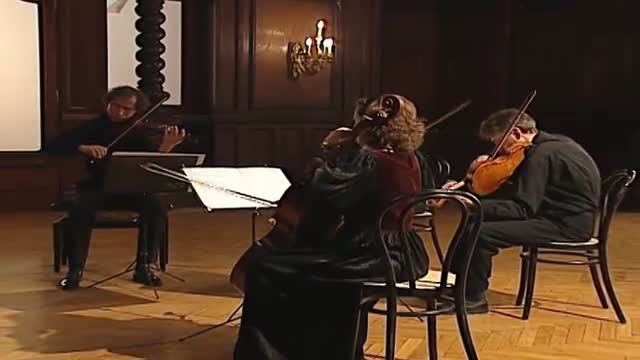Anner Bylsma’s admirable attitude towards historically-informed performance is demonstrated in some fine period-instrument recordings. His insistence on using gut strings on a spikeless cello for pre-twentieth-century repertoire is indicative of a thorough approach and he was pioneering in his use of the five-stringed violoncello piccolo for certain viola da gamba works, including Bach’s Cello Suite No. 6. He is unusually outspoken about his aesthetic agenda; of the term ‘authenticity’ he says: ‘(this) is used as a weapon by some to exclude fellow musicians, and as a marketing tool by record companies to help sell records, even when the performance is not “authentic” at all. This word actually means whatever one wants it to mean.’ He accuses modern musicians of destroying rhetoric via an obsession with long, legato lines and says that ‘modern string players also bellow too much […] In a well-designed hall, you can play with much nuance, and the audience will hear it clearly. We need to stop making excuses for insensitive playing.’
Bylsma was introduced to the Baroque cello during his student years. After graduating he spent several years as an orchestral principal in Holland, during which time he began to gain an international profile as a soloist and chamber musician, forming a trio with Frans Brüggen and Gustav Leonhardt and later establishing the chamber ensemble L’Archibudelli.
The Vivaldi and Bach recordings selected here evidence a sensitive and clean approach with, as one might expect, very little vibrato, carefully nuanced phrasing and the soft yet articulate tone of gut strings, underpinned by an extremely reliable technique. The Vivaldi Sonata RV40 (1999) conveys an appropriate mixture of lightness and gravitas. In the Bach Suites Bylsma returns to the Anna Magdalena Bach manuscript that was rejected as inauthentic by nineteenth-century pedagogues of the German school, many of whom made their own editions. Bylsma’s reasoning is that Anna Magdalena’s addition of slurs is likely to be a good indication of performance practice of the day, rather than the bastardisation suspected by later editors. Here the later set (1992) is perhaps a rather better-engineered recording, the 1979 version sounding somewhat dry and gritty, but there is more interpretative daring and innovation in the earlier recording which makes for an interesting comparison. The 1992 set is performed on the 1701 ‘Servais’ Stradivarius (an unusually long-pattern instrument) with the exception of No. 6 for which Bylsma uses a 1700 Tyrolean violoncello piccolo. In the Suite No. 5 we hear Bach’s original scordatura tuning (C–G–D–G).
The Haydn Cello Concerto No. 1 (1990) is a well-sculptured rendition, with some very tidy orchestral playing by Tafelmusik under Jeanne Lamon; the same ensemble supports Bylsma in six concertos by Leonardo Leo (1984) which are full of energy and dramatic contrast.
In nineteenth-century repertoire Bylsma enters controversial territory. At the time of recording (1989 and 1995 respectively), his Beethoven and Brahms sonata performances were rooted in a thinner soil of scholarship than any of his Baroque recordings; and with the benefit of hindsight these performances are historically unconvincing. The Beethoven Sonata in A is clean and tidy, certainly, but there is a wearing regularity of tempo, and devices such as rolled chords are absent from Bilson’s fortepiano playing. The (Grammy® Award-nominated) Brahms Sonata in E minor has a noticeable and stylistically-appropriate lack of vibrato, for which Bylsma must be lauded, but there should be much more employment of portamenti here, since we know from many contemporary accounts that Brahms’s sound-world certainly enjoyed a lavish use of the device. We may not associate the 1920s with a conscious striving for authenticity in performance, but it is interesting that Beatrice Harrison’s recording of the same Brahms work is considerably more fiery and compelling, and does demonstrate the kind of flexibility in tempo and tone (including portamenti) that Brahms would have known.
Anner Bylsma may not be a household name, but his revolutionary and unswerving approach to playing early music has made a huge contribution to modern music-making.
© Naxos Rights International Ltd. — David Milsom (A–Z of String Players, Naxos 8.558081-84)
| Title | |
| BACH, J.S.: Kunst der Fuge (Die) (The Art of Fugue) (excerpts) / Cello Suites Nos. 1 and 5 | |

|
BACH, J.S.: Kunst der Fuge (Die) (The Art of Fugue) (excerpts) / Cello Suites Nos. 1 and 5
Composers:
Bach, Johann Sebastian -- Kurtag, Gyorgy
Artists:
Bylsma, Anner -- Keller Quartet
Label/Producer: EuroArts |
